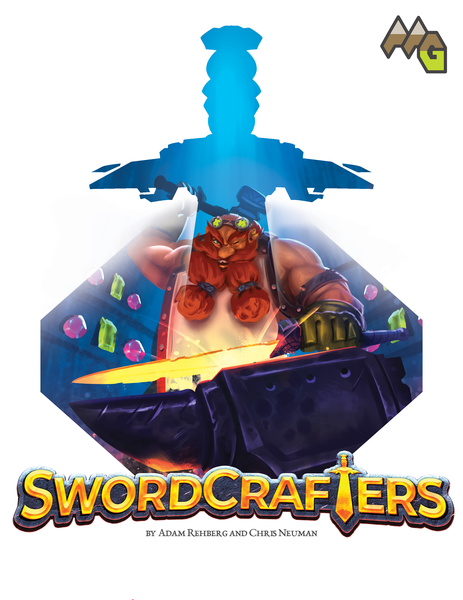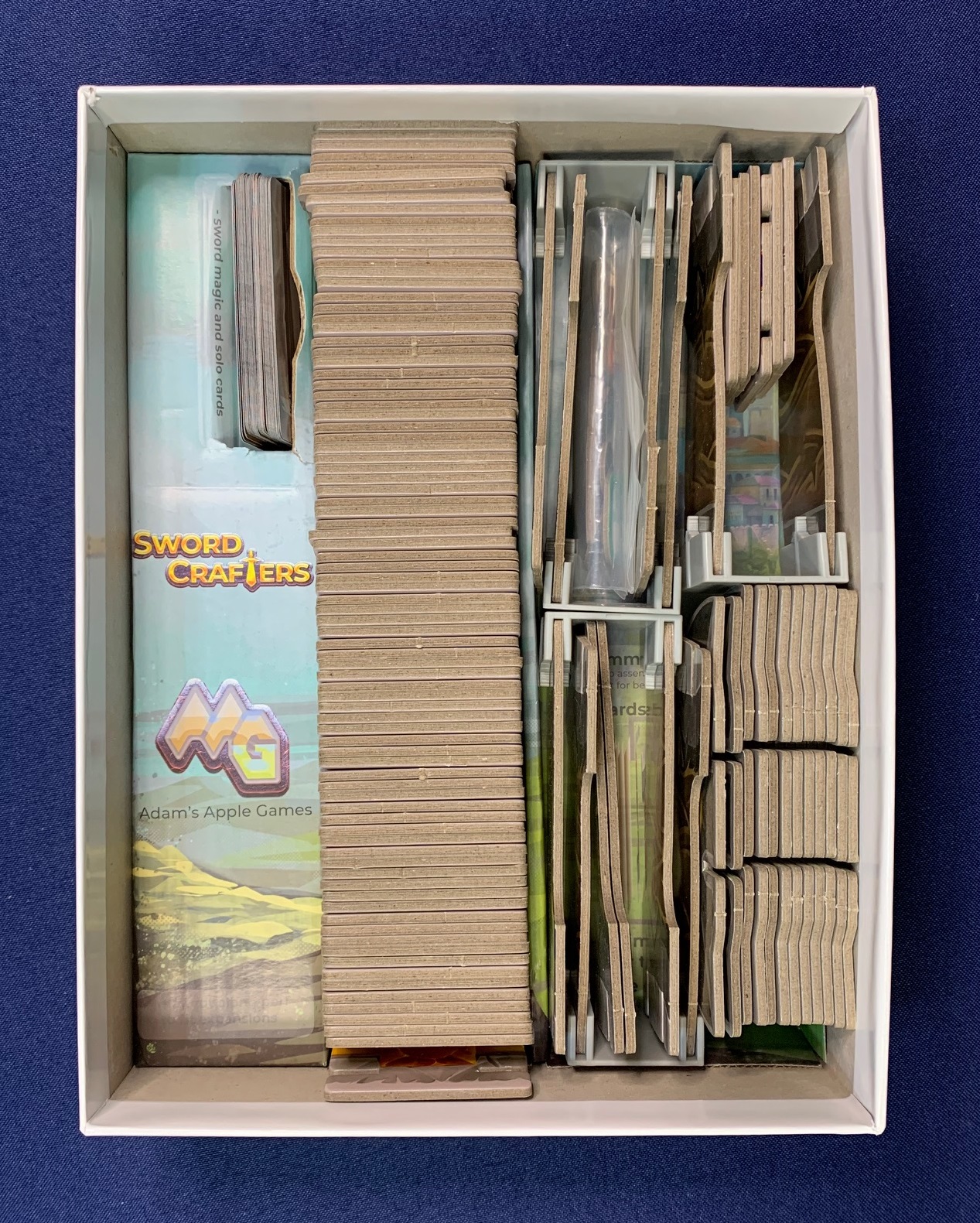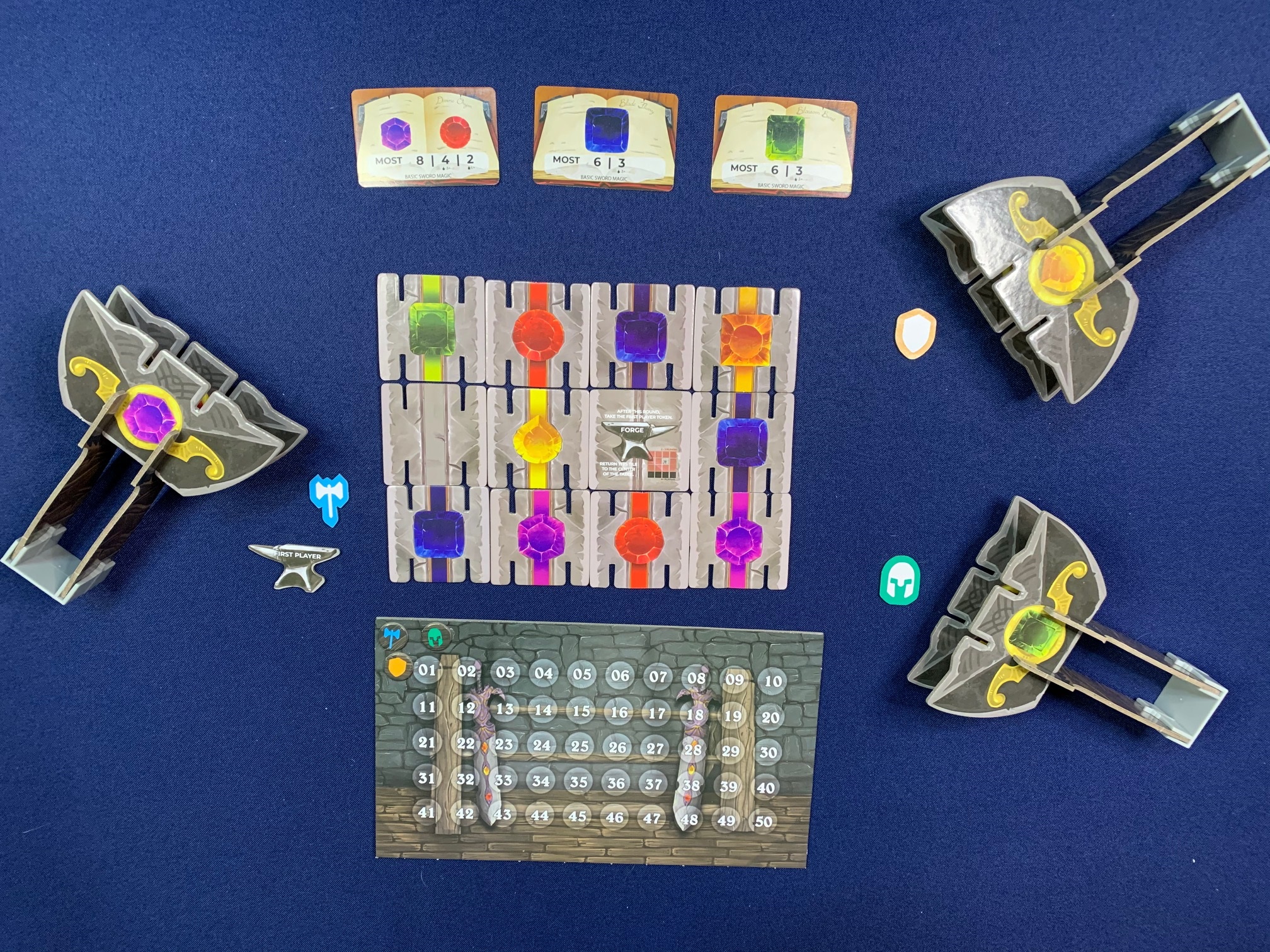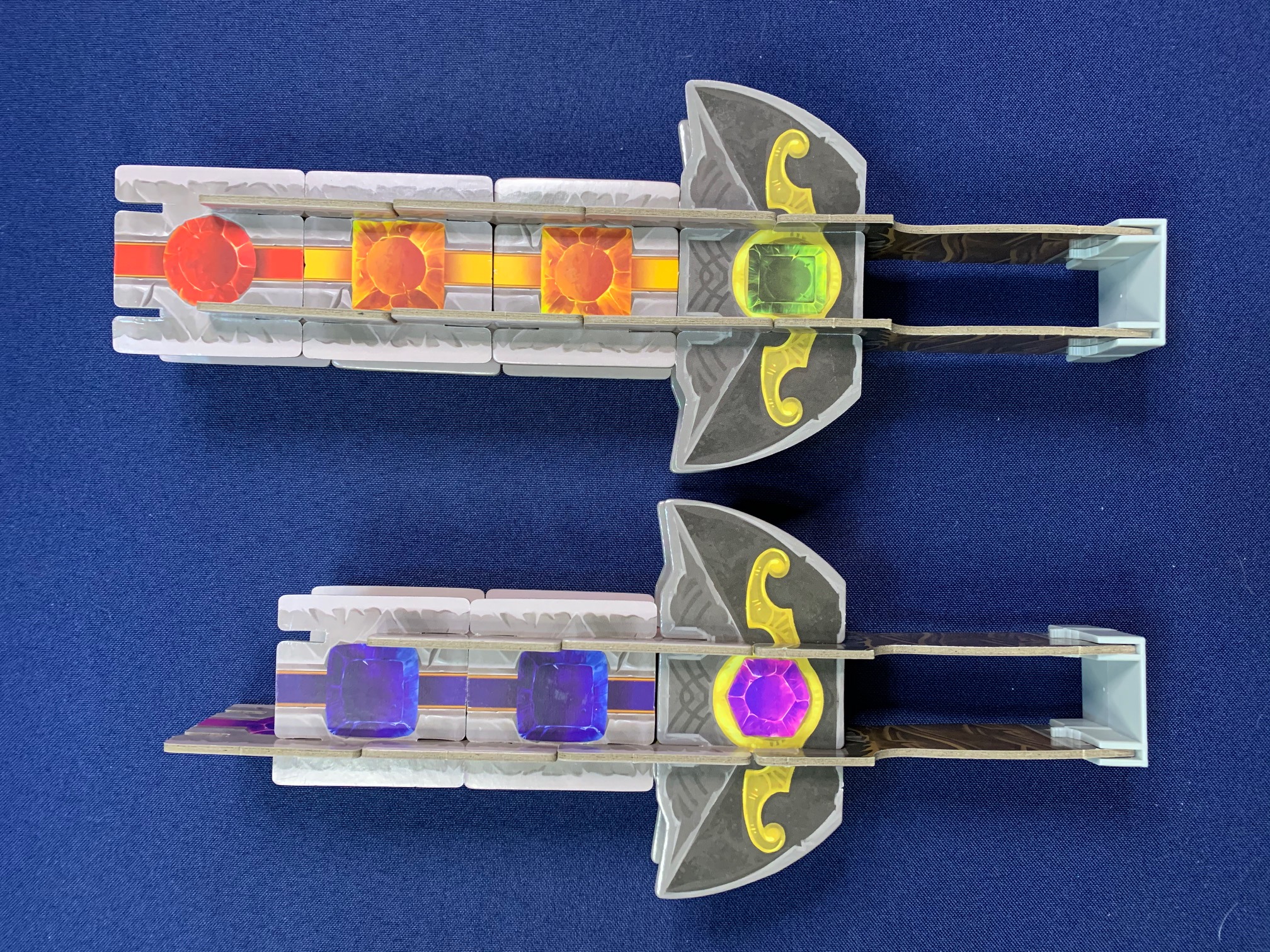You are a master blacksmith, and your king has summoned you and other blacksmiths to craft a new magical sword to protect the kingdom. The last sword served the kingdom well, but it's magic had been spent. Do you have the talent and materials to impress your king?

| Swordcrafters (2018) | |||||
| Designer(s) | Ryan Lambert, Chris Neuman (II), Adam Rehberg | Artist(s) | Rodrigo Camilo Alves De Almeida | Publisher |
Adam's Apple Games |
| 1-5 | 6+ | 20-30m | |||
In Swordcrafters, you are creating 3D swords from hilts and unique sword tiles that have been designed in such a way that allows the pieces to lock together. The game will be played over the course of 6 rounds; each round will end with the players taking the sword tiles they have collected that round and adding it to their sword. After the 6th round, players will receive Victory Points (VP) based on three criteria; whoever has the most points is the winner! Players should proudly take pictures of the results of their craftsmanship.
Box and Components
The components are very interesting. The first thing people will need to put together are the hilts for the swords; once you start playing, everyone will random take two of the sword guards to attach to their hilts. The other tiles in the box will be the pieces of the blades and will have 4 notches cut out (a pair on two opposing sides). This design allows the players to craft physical cardboard swords that are not only neat looking, but also provide a satisfying trophy to take pictures of at the end of the game. There isn't much in terms of artwork in this game, but what it has is nice looking and suitable for the game.
The one thing I dislike is the box insert. While the sword tiles almost fit into the provided space in the box, there are a few too many tiles for the width of the box. I feel like there is probably a better insert layout that would have been better. It is certainly serviceable and not bad enough to toss the insert.

A concern for games with components like this is durability; with components that are put together and taken apart frequently, there is a fear that the pieces will wear out quickly. My copy has been played over 30 times, and the pieces barely show signs of use. The material used seems to be holding up very well. My audience has mostly been teens and younger adults, but I have had a few younger children play. So mileage will vary depending on the players.
Mechanics
While I love the 3D swords, I may enjoy the mechanics even more. This game can be taught in about 5 minutes. Everyone who has played the game really liked it including a few who thought they wouldn't. Below is a quick summary of the game; please refer to the rules provided on the publisher website for all game play details.
The game is played over 6 rounds with 3 phases in each. Players will start the game with a sword hilt and two random sword guards (I will discuss the gems in the scoring section). There will also be three sword magic cards placed face up so all players can see them (these will be explained in the scoring section).

Before each round, a number of the sword tiles will be laid out in a grid formation shown on the anvil tile that will be out every round.
Phase 1: Slice
The starting player will divide a group of sword tiles into two groups. The groups do not have to be even, but it must be horizontal or vertical splitting that group into exactly two smaller groups. Players will take turns doing this going around the table until all players have had a chance to slice a group of tiles. There should be groups of tiles equal to the number of players plus one.
Phase 2: Select
The starting player will claim a group of sword tiles and will add them to their sword while others proceed to take their set of tiles. The one tile that will not be added to the sword is the anvil; the player who takes the anvil becomes the new first player. If no one took it, the player left of the current player will become the starting player for the next round. The last group of sword tiles are returned to the box and will not be used this game.
Phase 3: Crafting
As mentioned in the prior step, you will begin adding the tiles to your sword. Once you have seen how the tiles lock, it is pretty straight forward. The two notches on the tile you are adding will slide into the notches of the two other sword tiles on your sword. When adding tiles, you must fill in all spaces on your sword on each row before proceeding to the next row; there cannot be holes in the blade because the blade will not be durable enough.
End of the Game
Once the players have completed 6 rounds, the game ends and scoring begins. Final scores will be based on three criteria; add all of the VP awards from these criteria and who ever has the most points wins!
Sword Length
All players will compare their sword by placing the hilt on the table and seeing which sword is the longest. If there appears to be a tie, compare the number of sword tiles used; the player(s) with the most, receives 6 VP.

Sword Quality
Players will look at all four sides of their sword; for each side, they will find the longest series of connected matching gems (connected series of blank Sword Tiles do not award VP). The player earns 2 VP for each of those gems in the series. The series of gems must be at least 2 gems (single gems offer no VP). The gems on the sword guard can also be included in these series. Players will receive VP from each side but only from one series on each side.


Sword Magic
Players will receive VP based on sets of gems listed on the Sword Magic cards. If multiple players tie for the conditions on the card, the points are divided up among players; if two players tie for 1st on a card, they add the 1st and 2nd place VP awards and divide them. Certain VP awards will only be used in certain player counts as shown below the VP values.

Expansion
There has been an expansion released recently that has some new components to the game such as sword tips. sword relics, and sword mastery. I haven't had the opportunity to play this expansion yet, but based on what I have read from the expansions manual, it should keep the game simply to play while adding in some new options during the game play as well as points at the end. Once I get a copy, I will do a separate write up on it and the specific changes it introduces to the game.
Final Thoughts

I have demoed a lot of games at our local game store and conventions, and this game is in the top 5 most demoed games. It is easy to draw people in when there are 3D swords on the table; people always ask what the swords are and rarely leave without giving the game a try. This game is perfect for those people who don't have the time for long games, children who prefer quick games, and gaming groups as a quick, fun filler. I highly recommend this game if sounds like the type of game you would be interested in.
